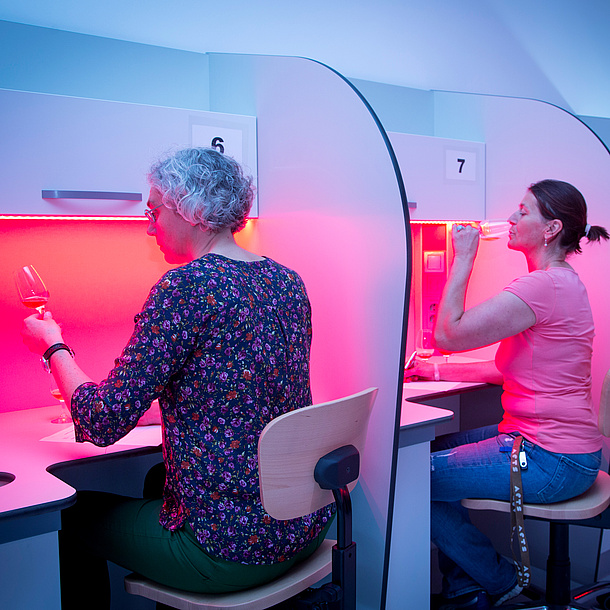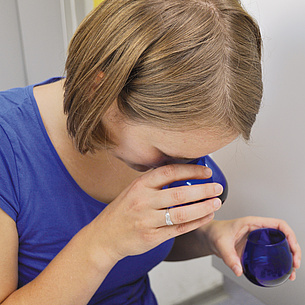Content
- You learn the fundamentals of smell and taste perception.
- You focus on the most common sensory testing methods for foods and consumer objects – from the demands on the assessors and choice of method to the testing itself and statistical evaluation.
- You discover how to establish or improve the use of sensory testing as a testing and measuring method in your company.
- Theory of sensory perception
- Demands on and training of assessors
- Designing a testing laboratory
- Relevant standards
- analysis of foods
- Types of sensory testing
- Choice of methods
- Testing and evaluation
- Recognising basic tastes
- Threshold testing
- Recognising smells
- Recognising aromas
- Differentiation tests
- Ranking tests
Target Groups and Admission Requirements
People who dealing with the systematic sensory evaluation of foods in their professional environment.
For information on requirements, please contact barbara.siegmund@tugraz.at.

Next course date: 16 September 2025
- Length: 1 day, 9 a.m. to 5 p.m.
- Certificate: TU Graz certificate
- ECTS credit points: 1
- Language of instruction: German
- Registration fee: 650 € (VAT free), including sample materials, handouts, and food & drinks during the break.
- Cancellation policy:
If a participant is unable to attend a course, a written cancellation is required. A cancellation fee of 30% will be charged from the time of registration, from three weeks before the start of the course the participation fee is due in full. In the event of a no-show, the entire participation fee will be charged. - Number of participants: max. 15
- Course location: TU Graz, sensory laboratory
- Syllabus (available in German only)

This course focusses on the sensory analysis of foods as a scientifically approved testing method. You learn about a fascinating method taught using an effective mixture of theory and practice.
Institute of Analytical Chemistry and Food Chemistry
Stremayrgasse 9/II
8010 Graz
Area map
www.analytchem.tugraz.at
Programme Director and Administration
Barbara SIEGMUND
Assoc.Prof. Dipl.-Ing. Dr.techn.
Phone: +43 316 873 32506
barbara.siegmund@tugraz.at
Teaching Staff
Barbara SIEGMUND
Assoc.Prof. Dipl.-Ing. Dr.techn.
Phone: +43 316 873 32506
barbara.siegmund@tugraz.at
Erich LEITNER
Ao. Univ. Prof. Dipl.-Ing. Dr. techn.
Phone: +43 316 873 32503
erich.leitner@tugraz.at



